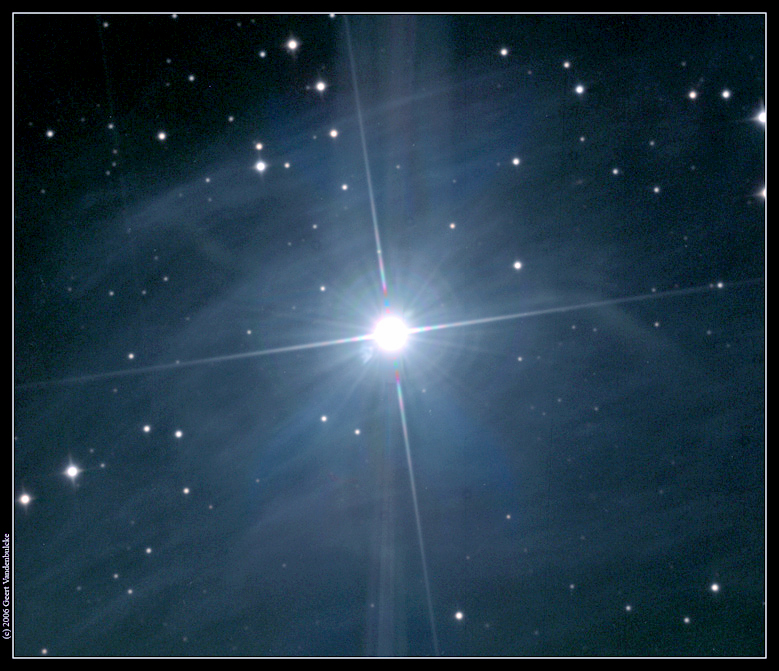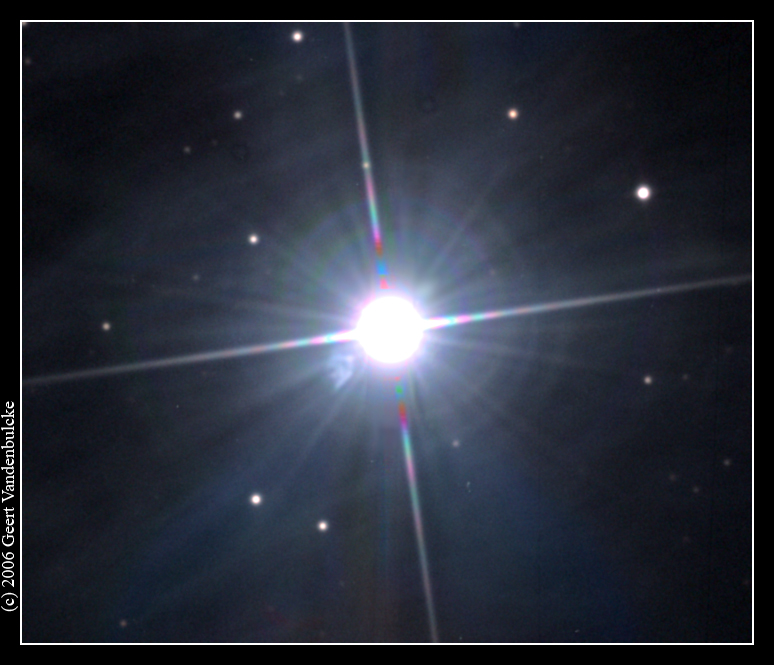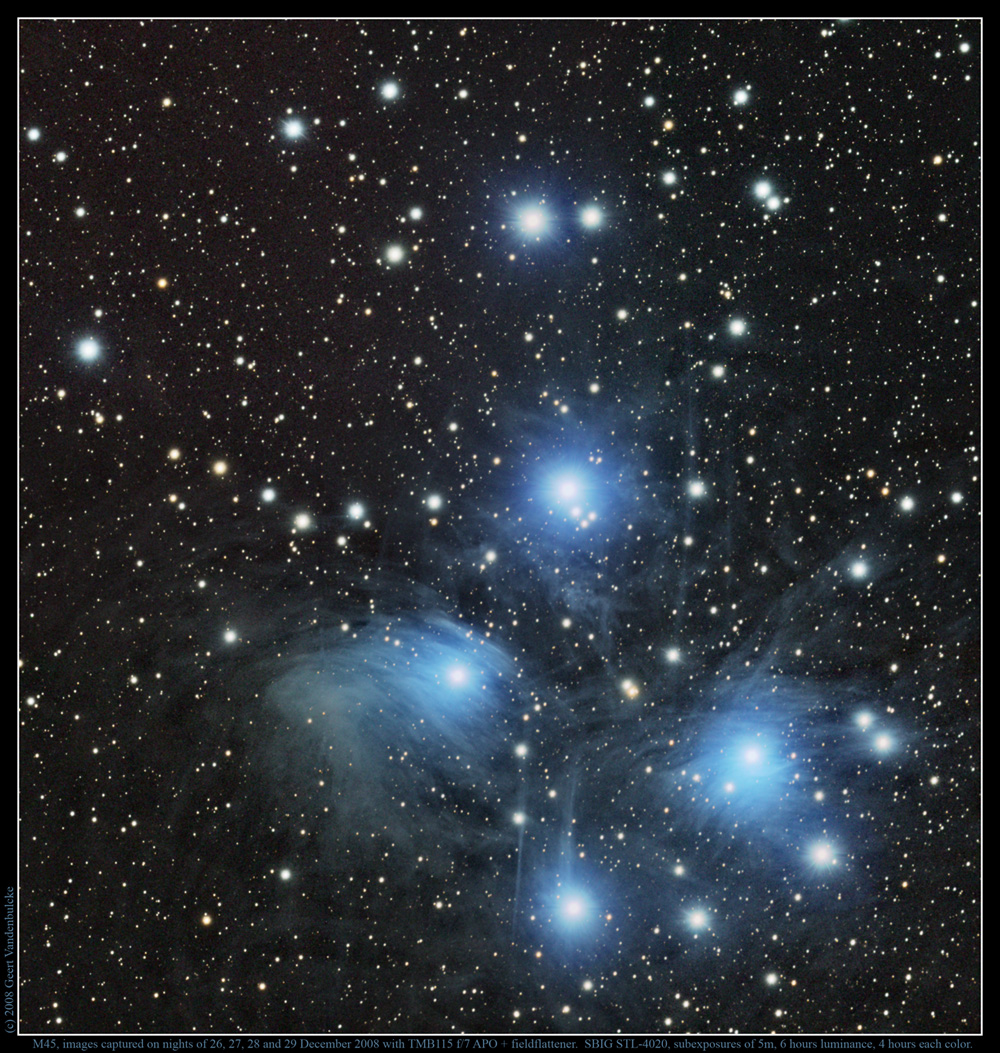
M45.
Latest image on top, for older images - scroll down the page.
After receiving my SBIG STL-4020 camera, I started imaging M45 in the last week of December 2008. I worked 4 nights on the object accumulating 8 hours of luminance and 4 hours of R, G and B data from my light polluted location. Each night was spent on a different panel of a 4-panel mosaic. During each run a first series of LRGB images was made and then after an "meridian flip" another series LRGB were made. The first panel of the mosaic had a slightly different orientation than the three others as I took off the camera from my TMB115 refractor. On the three next sessions, the camera remained on the telescope. Focussing was done using a Feathertouch motor on the Feathertouch 3.5" focuser, sofware for focus was FocusMax interfaced with CCDSoft V5. The atmospheric circumstances on these four nights where not identical. Together with light pollution at my sub-urban location this complicated the processing of this image.
It took until August 2009 before I started processing the images. CCDSoft was used for reducing all images with darks and flats. Then first the 4 individual L, R, G and B mosaics were made. Then these mosaics where registered with Registar software before combining the RGB images into a color version, and then the Luminance mosaic was added. Further processing and color corrections were done in Photoshop.
For the 100 percent size: click here.

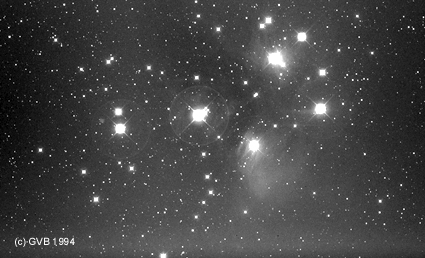
06/12/1994, Pleiades with my Lichtenknecker 190/200/760 Flat Field Camera and TP2415 Hypered. 30 m exposure, guided with ST-4 on 90 mm f/11 refractor.
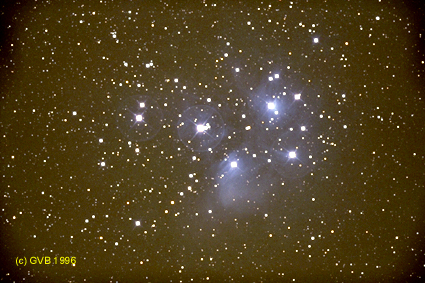
1996, Image made in Cruis, S-France. FFC 190/200/760, exposure 60 m on Fuji G800.
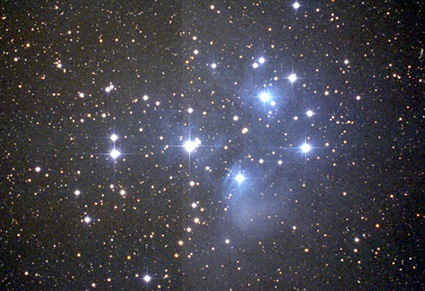
5-6/10/1999 : M45, 30 m exposure with a Takahashi Epsilon 160 from Cruis, France. Fuji Superia 800 color negative film.
M45 2006 01 20
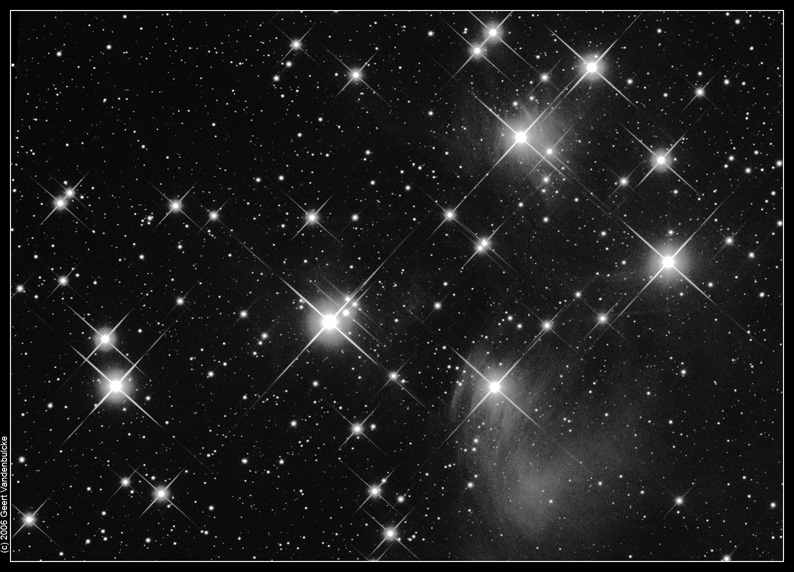
TMB 80 mm f/7.5 with Televue 0.8 reducer = 480 mm focus. 2hr50 m exposure with SBIG ST-2000. Sky transparency was bad, hence the lack of nebulosity. I also think that a filter was in the lightpath as it seems the TV reducer can block the CFW-8 filterwheel (threads on the reducer too long)! The diffraction spikes where generated by some black string taped in front of the objective.
I added another image made on 20060127 onto the one above. Again, transparency was not good at all with some haze :-(((.
I did not use the string cross to generate diffraction spikes this time. Layering the two images reduced the prominent spikes seen above. The second image was 10x10 minute exposures, this time with the Luminance filter properly in place. You can see these two images in 100 % size here.
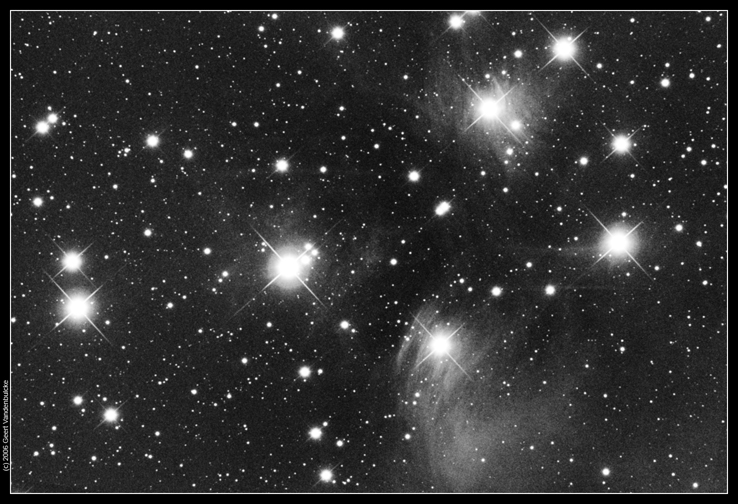
Merope and IC349 or Barnard's Merope Nebula. (Images made on 22 Nov 2005).
Most images of M45 are made to show the extended nebulosity around that asterism. However, very close to Merope one can observe a bright nebulosity discovered by E.E. Barnard in 1890. The Hubble Space Telescope has made a fascinating image of this eerie object. Amateur images of IC349 are hard to be found and that is because bright Merope is causing all sort's of unwanted effects in amateur telescopes and you also need a long focus to image it well.
Here is my first go at it, using a Celestron 11 working at f/10. The camera was a SBIG ST-2000XM with SBIG filters in the CFW8. The luminance part of the image was 15 minutes (30x30s). Red was 15 m as well while Green and Blue got 7,5 m (15x30s). This image still shows "problems", more exposure time is needed and the focus is not perfect (although I refocused for each filter). Also the sky conditions were not perfect with some slight haze, but a FWHM varying between 3 and 2,5 arcseconds.
First image is an overview of M45, only 15 minutes luminance with a TMB 80/600 Super-APO refractor and the ST-2000XM. Processing was such as not to drown IC349 in Merope's glare. The arrow points at IC349 just south of Merope. Note on the right edge of the image about in the middle is a small galaxy of magnitude 17,3: PGC13696, it's only 1,0x0,1 arcminutes in size.
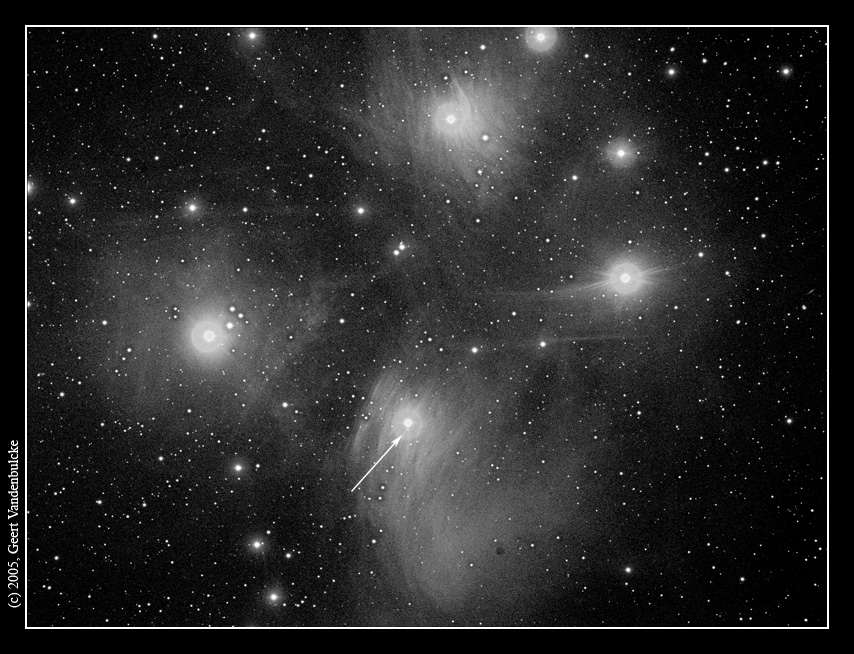
And this is my first go at a close-up of Merope with IC349. When conditions are better I'll surely try this one again! Inset is the HST image.
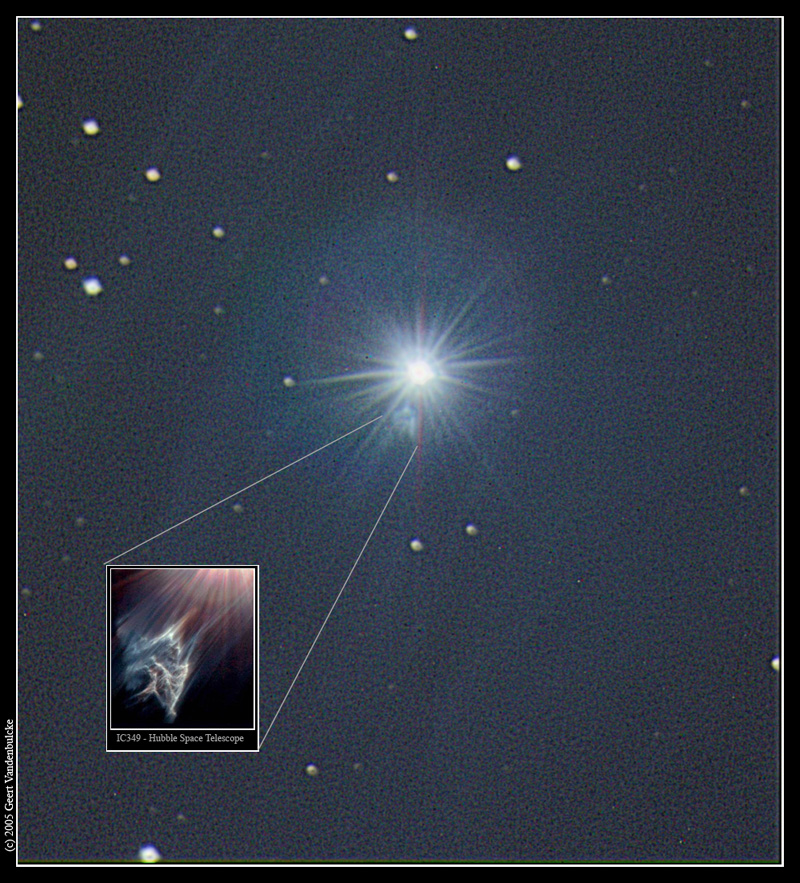
I tried a second time to image IC349 on 28 January 2006. Again with my Celestron 11 at f/10 but this time with my SBIG ST-10XME and Astrodon filter LRGB filter set. Subexposures where 60 x 1m Lum and for the RGB each 30 x 1 m, so a total exposure time of 2hr 30m. I used a wooden cross to generate the diffraction spikes. Off course, the ST-10XME produced huge blooming spikes which were removed on each of the 150 images before aligning and stacking. The lower image is a full size crop of the area.
